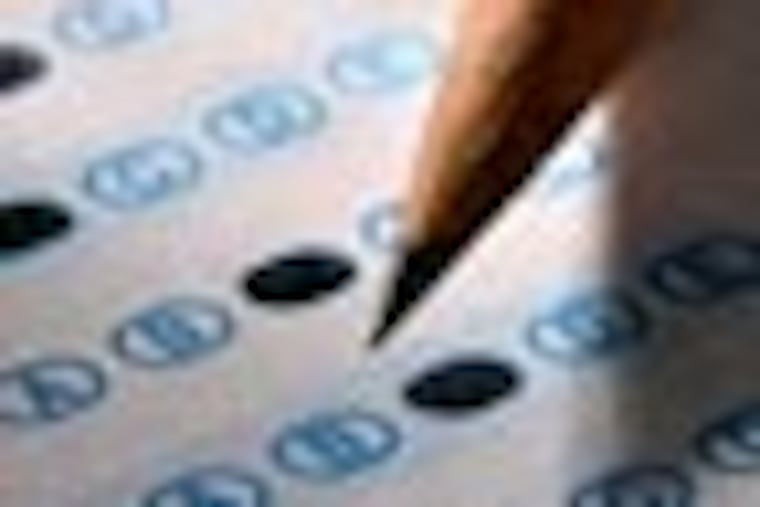Participation in AP exams up, especially among minorities
The number of high school students taking Advanced Placement exams, which can qualify for college credit, climbed substantially in the last decade or so, with the proportion of minorities and low-income students among them increasing even more.

The number of high school students taking Advanced Placement exams, which can qualify for college credit, climbed substantially in the last decade or so, with the proportion of minorities and low-income students among them increasing even more.
At the same time, the percentage of students scoring 3 or higher on the test, the grade most colleges accept for credit, slipped slightly.
Officials at the nonprofit College Board, which offers the test, say scores dropped because more students who in the past would not have been interested or encouraged to enroll are taking the courses.
Some school districts, however, have bucked the trend, boosting student participation while keeping scores high. Among them are 16 in Philadelphia's Pennsylvania suburbs and three in South Jersey.
Nationwide, the College Board named 367 districts in the United States and Canada last month to its "AP Honor Roll," for expanding participation from 2009 to 2011, while increasing or maintaining the percentage that scored 3 or above.
Districts where numbers increased and the 3-or-above percentage was 70 or higher were also included.
Pennsylvania has the most honor roll districts - 34. New Jersey has 20, plus the Paterson Diocese.
From 2003, when the College Board began counting minority and low-income test-takers, the number of students taking at least one AP test almost doubled - from 1,017,396 to 1,973,545 in 2011.
The count of low-income students taking AP tests in those years almost quadrupled - from 96,000 to 376,000. Minority student participation grew more than 21/2 times, from 173,684 to 471,146.
The percentage of students with AP scores of 3 or higher, however, fell from 64.4 in 2003 to 60 percent this year.
Many districts, viewing AP courses as a way to prepare students for college and save them tuition money, are encouraging more to take them. Even as budgets got tighter, school boards ponied up extra money to staff new AP courses and train teachers.
In Montgomery County's Souderton district, for example, the board began a push four years ago to "move the district to a higher level of achievement," Superintendent Frederick Johnson said.
The rigor of English and social studies classes was increased, as was the number of AP courses, to 18.
The push got results. Souderton increased AP participation 40 percent between 2009 and 2011, from 308 to 432, while boosting the percentage scoring 3 or higher from 74 to 82. In June, close to 29 percent of graduates had taken an AP course and scored 3 or higher.
In Gloucester County's Clearview Regional School District, students sometimes hesitated to take AP exams because they feared a lower grade in the more rigorous courses might hurt their college prospects, Superintendent John Horchak 3d said.
The district got past that by weighting AP course grades in its GPA calculations so a lower grade could translate into a higher grade-point average, Horchak said. It has increased its AP participation since 2009 more than 47 percent while keeping high scores at about the same level: almost 74 percent.
Horchak said district officials also talked up the financial and academic benefits of students' starting college with several credits under their belts so they'd have to take fewer courses and would have greater opportunity to explore career options.
The Perkiomen Valley School District in Montgomery County increased the number of students in AP courses about 41 percent in the last three years while improving the percentage of students scoring 3 or higher from 78 percent to 82 percent.
Until this year, the district encouraged enrollment by paying the full cost of taking an AP exam - $87 this year - for all tests taken. Now it pays for one AP test per student per year, Assistant Superintendent Barbara Russell said.
The Upper Merion School District, also in Montgomery County, increased participation 45 percent over the last three years, while maintaining an 83 percent rate of 3-or-higher scores. The percentage of minority or low-income students scoring 3 or higher went from 67 percent to 88 percent, high school principal Jonathan Bauer said.
The district increased AP enrollment by sending high school department chairs and counselors to the middle school to encourage students who could achieve a high level to take the courses, Bauer said, adding: "It's a one-to-one process."
at 215-854-2612, dhardy@phillynews.com,